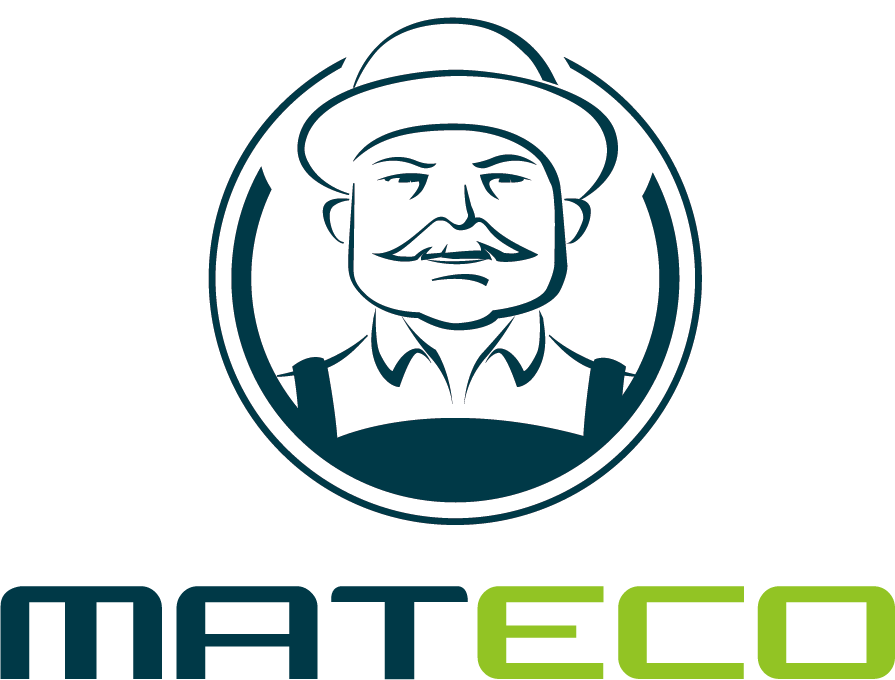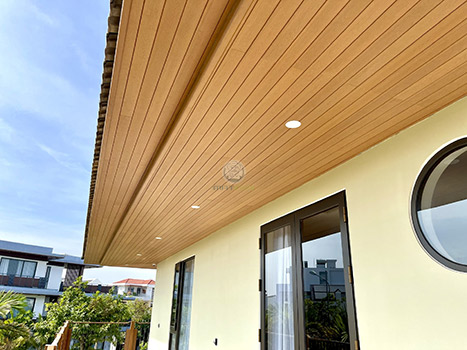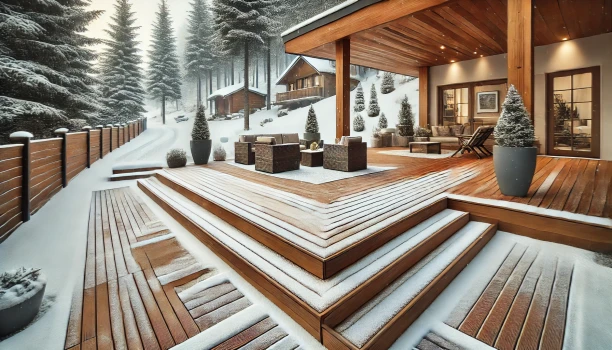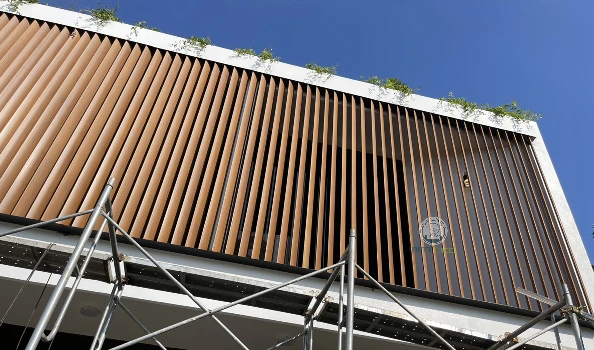Why Choose WPC Cladding on Commercial Projects?
In today's architectural landscape, creating visually appealing, durable, and sustainable commercial environments is of paramount importance. With the advent of WPC (Wood-Plastic Composite) cladding, architects, designers, and developers have discovered a game-changing solution that enhances commercial spaces in multiple ways. From its remarkable versatility and aesthetic appeal to its longevity and eco-friendliness, WPC cladding has become a go-to choice for commercial projects. In this post, we will explore the key features and benefits of WPC cladding.
What’s the WPC Cladding?
WPC cladding, short for Wood-Plastic Composite cladding, is a remarkable building material that has gained significant traction in the construction industry. It is a composite material that combines wood powder with thermoplastics, such as PVC or PE, to create a durable and versatile cladding solution. The wood powder provides natural aesthetics and adds strength, while the thermoplastics contribute to the material's weather resistance and stability. WPC cladding offers a comprehensive solution for enhancing commercial spaces, as it combines the best qualities of wood and plastic. It provides the timeless beauty and warmth of wood while offering superior performance characteristics, including resistance to rot, decay, and insect damage.
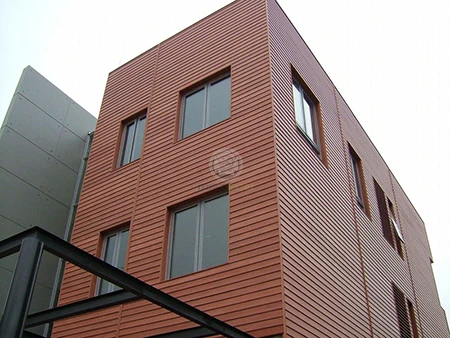
How WPC Cladding Enhances the Aesthetics of Commercial Buildings
The aesthetic appeal of WPC cladding is undeniable. With a wide range of finishes, including wood grain textures, stone-like appearances, and contemporary designs, WPC cladding can effortlessly transform the look of commercial spaces. Whether aiming for a traditional, rustic, or modern aesthetic, WPC cladding offers options that cater to diverse architectural styles. The ability to customize the color, texture, and pattern of the cladding allows designers to create visually striking exteriors that leave a lasting impression on visitors and occupants alike.
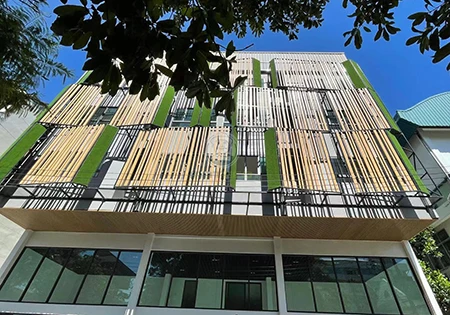
Durability and Longevity: Why WPC Cladding Is Perfect for Commercial Projects
Commercial buildings face constant exposure to external elements, making durability a top priority. WPC cladding excels in this regard. The combination of wood fibers and thermoplastics creates a robust material that is resistant to moisture, UV rays, and impact. It retains its structural integrity over time, ensuring that the building's façade remains attractive and intact for years to come. The longevity of WPC cladding translates to cost savings and reduced maintenance efforts, making it an ideal choice for commercial projects.
MATECO takes pride in its advantage of offering WPC cladding that comes with a 10-year non-fading guarantee. This guarantee speaks to the company's commitment to providing customers with a reliable and long-lasting cladding solution. With MATECO's exterior WPC cladding, commercial projects can benefit from not only the durability and longevity inherent to WPC cladding but also the assurance of maintaining its original vibrant appearance over an extended period.
The Versatility of WPC Cladding in Commercial Design
One of the standout qualities of WPC cladding is its versatility in commercial design. It can be used to create feature walls, accent panels, and full-building exteriors. The cladding can be installed vertically, horizontally, or even diagonally, allowing for endless design possibilities. Moreover, WPC cladding can be combined with other materials such as glass, metal, or concrete, enabling architects to achieve unique and eye-catching architectural compositions. The versatility of WPC cladding opens up a world of creative opportunities for enhancing the visual appeal of commercial spaces.
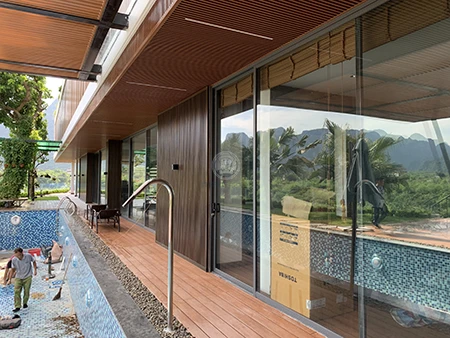
Fire Resistance and Safety Benefits of WPC Cladding in Commercial Settings
Safety is a critical aspect of commercial spaces, and WPC cladding provides enhanced fire resistance compared to traditional wood cladding. The incorporation of fire retardant additives during the manufacturing process improves the cladding's fire performance. WPC cladding also resists the spread of flames and generates lower smoke levels in the event of a fire, enhancing the overall safety of commercial buildings and providing occupants with valuable evacuation time.
Maintenance and Care Tips for WPC Cladding in Commercial Spaces
Maintaining WPC cladding is relatively straightforward, making it an attractive option for commercial projects. Regular cleaning with mild detergent and water, along with occasional inspections for damage, can help preserve its appearance and performance. It is important to avoid abrasive cleaners or harsh chemicals that may damage the cladding's surface. By following proper maintenance and care practices, commercial spaces can retain the pristine look of WPC cladding and maximize its longevity.
The Cost-Effectiveness of WPC Cladding for Commercial Projects
While the initial cost of WPC cladding may be slightly higher compared to some traditional cladding materials, its long-term cost-effectiveness makes it a wise investment for commercial projects. The durability and low-maintenance nature of WPC cladding significantly reduce ongoing repair and replacement expenses. Additionally, the energy efficiency provided by WPC cladding can contribute to lower heating and cooling costs for commercial buildings, further enhancing its cost-effectiveness over time.
Successful Applications of WPC Cladding in Commercial Architecture
Application: Apartment decoration
Product: WPC co-extrusion exterior wall cladding
Model: Q155CD
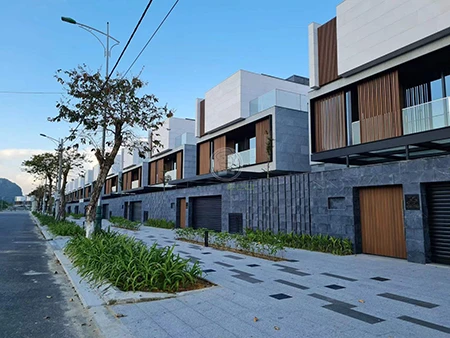
Application: Warehouse decoration
Product: WPC co-extrusion exterior wall cladding
Model: Q155CD
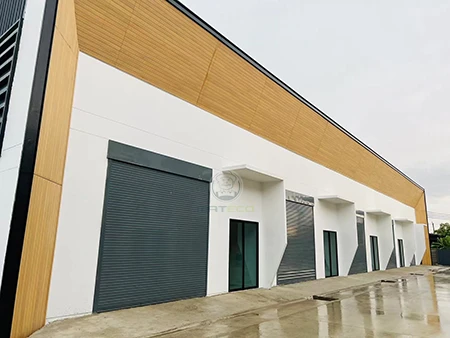
Application: Swimming Pool decoration
Product: WPC co-extrusion exterior fluted wall cladding
Model: Q300C
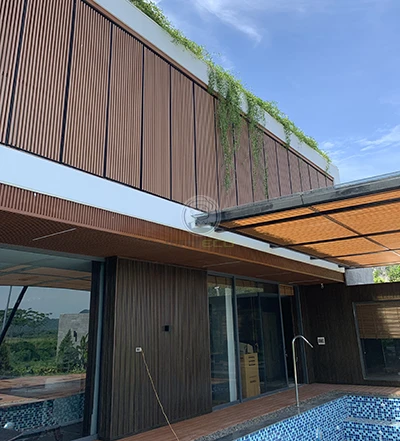
If you are looking for a WPC manufacturer, MATECO will be your best choice.
Website: https://www.matecowpc.com
WhatsApp: +86-13380085620
Email: info@matecowpc.com
